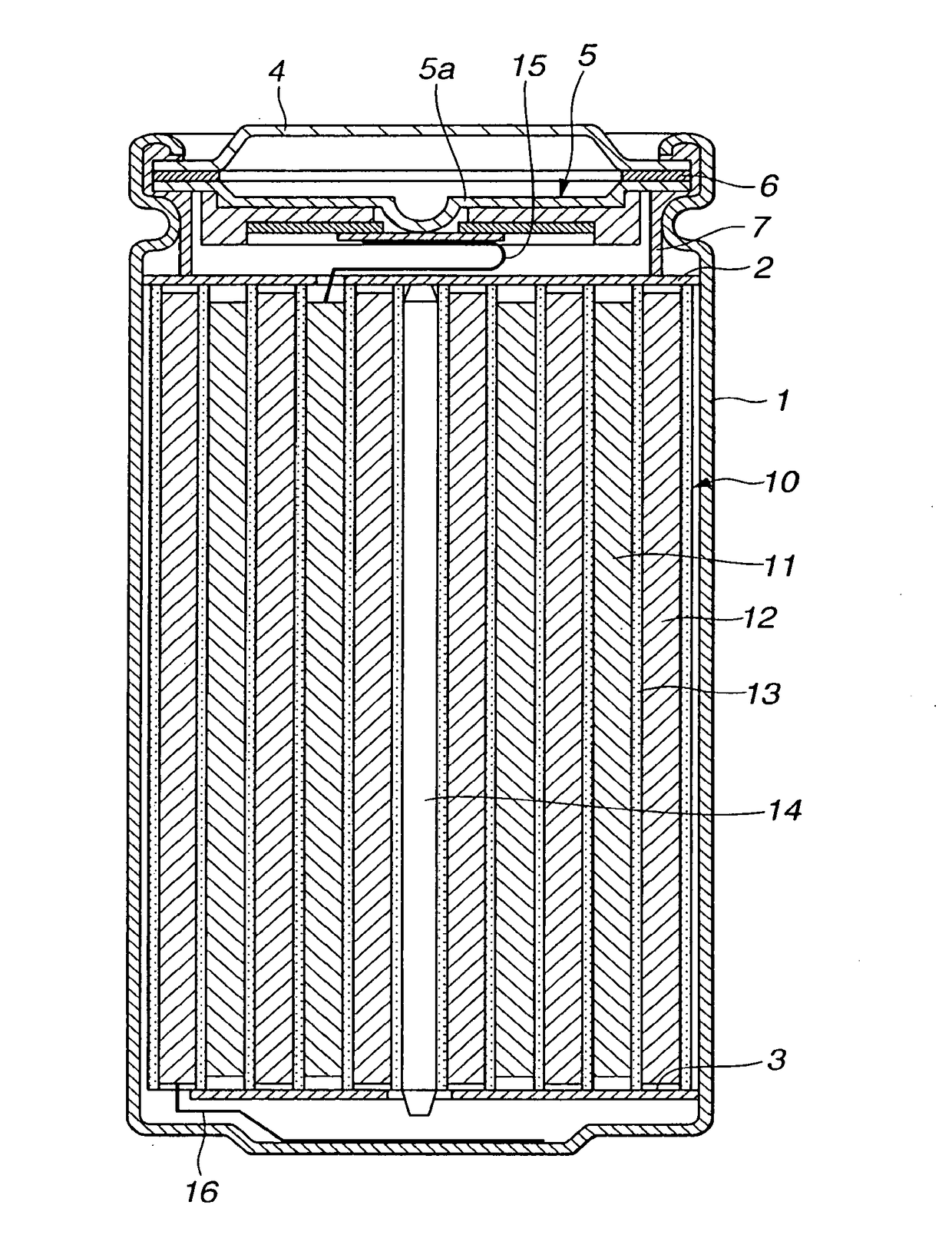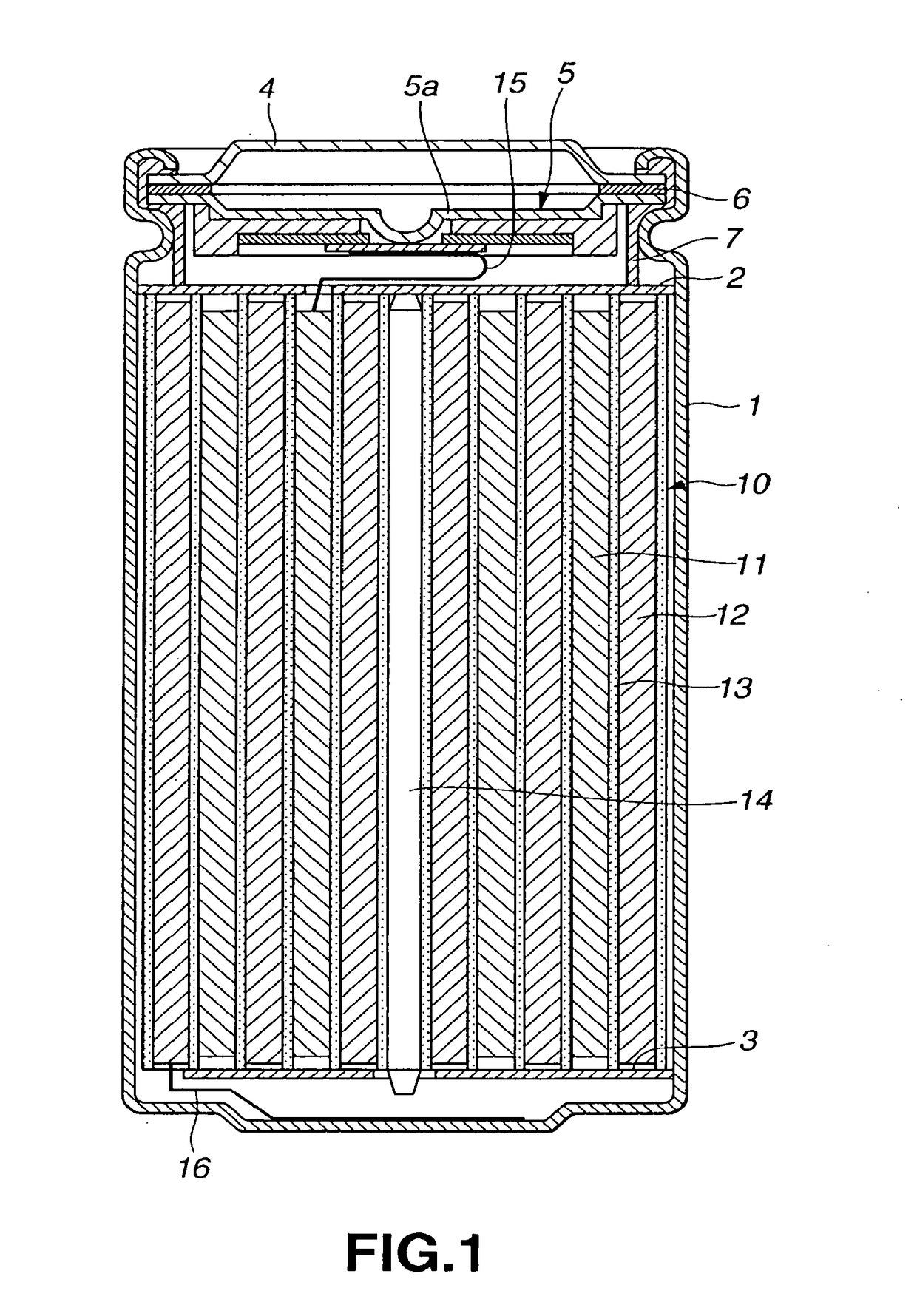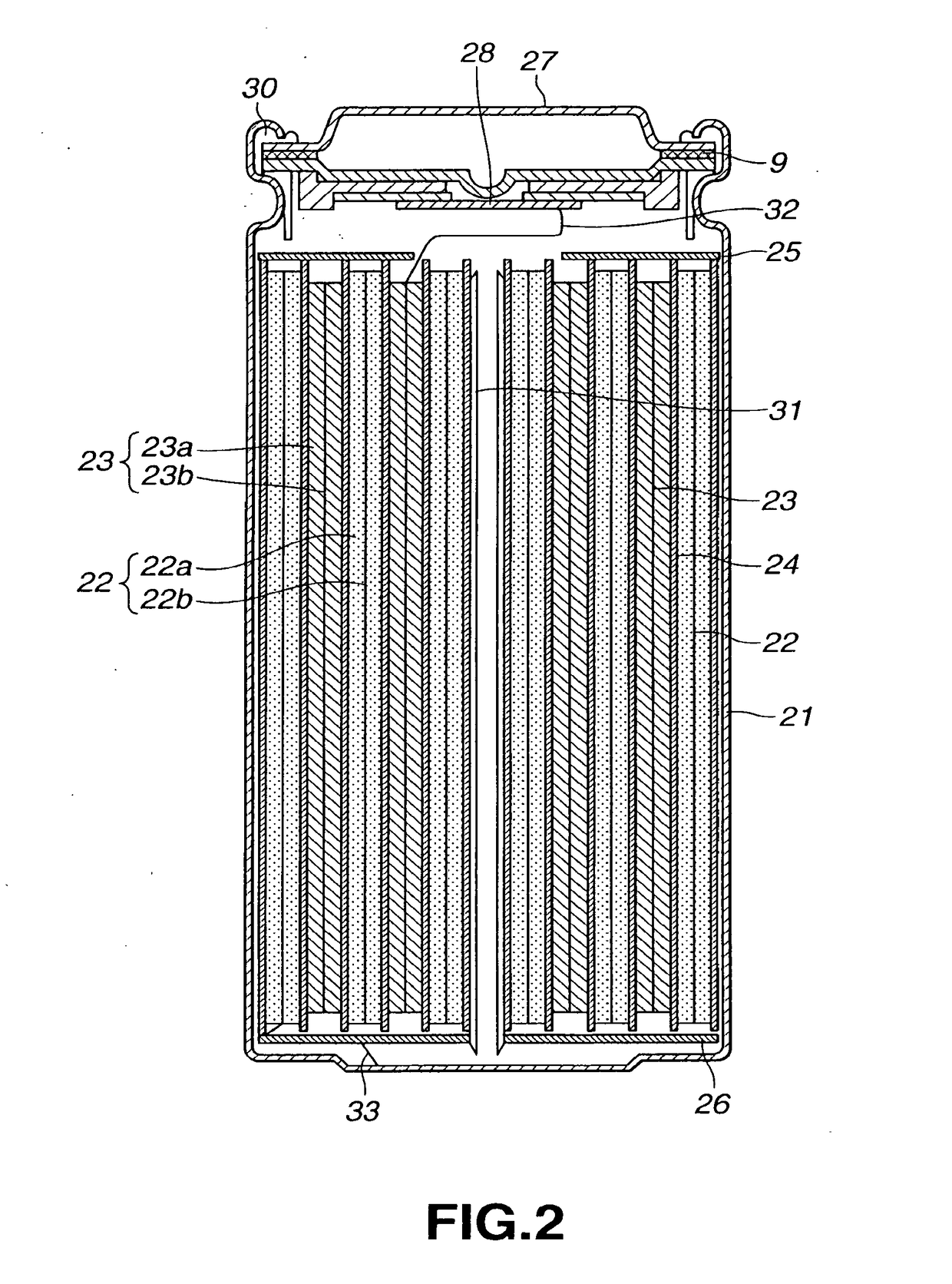Non-aqueous electrolyte battery
a technology of electrolyte battery and non-aqueous electrolyte, which is applied in the direction of cell components, cell component details, electrochemical generators, etc., can solve the problems of low strength of polyethylene single layer separator, possible melting of microporous film and flow out, and possible piercing and breaking of separators, etc., to achieve excellent reliability and excellent cyclic characteristics and productivity. excellent
- Summary
- Abstract
- Description
- Claims
- Application Information
AI Technical Summary
Benefits of technology
Problems solved by technology
Method used
Image
Examples
example 1
[0074]Now, the present invention will be described on the basis of specific experimental results.
[0075]The porosity and the 90% cumulative pore size of a separator in the following experiments were measured by a mercury porosimeter poremaster 33P (produced by Yuasa Ionic Co., Ltd.) and obtained from a pore distribution curve got from the amount of mercury and pressure relative to the size of pores. The melting point of microporous polyethylene used for the separator was obtained from temperature at which a heat absorption reached a maximum value by carrying out a differential scanning calorimetry (DSC) in accordance with JIS-K-7121 except that temperature rise speed was 5° C. / min.
experiment 1
[Experiment 1]
[0076]In an Experiment 1, the rate of microporous polyethylene relative to the thickness of a separator and the melting point of the microporous polyethylene were examined.
[Sample 1]
[0077]In a Sample 1, a nonaqueous electrolyte battery was manufactured as described below.
[0078]A cathode was manufactured as described below. Initially, lithium cobalt oxide of 85 parts by weight having a composition of LiCoO2, a conductive agent of 10 parts by weight and a binding agent of 5 parts by weight were mixed together to prepare a cathode composite mixture. In this case, as the conductive agent, graphite was used and polyvinylidene fluoride (PVDF) was used as the binding agent.
[0079]Then, the cathode composite mixture was dispersed in N-methylpyrrolidone as a solvent to have slurry. Then, the slurry was uniformly applied to both the surfaces of an elongated aluminum foil having the thickness of 20 μm as a cathode current collector and dried to form a cathode active material layer...
experiment 2
[Experiment 2]
[0108]In an Experiment 2, the thickness of the separator was examined.
[Sample 13]
[0109]In a Sample 13, a cylindrical type nonaqueous electrolyte battery was manufactured in the same manner as that of the Sample 1 except that as the separator, a polyolefin separator made of three layers of microporous polypropylene (PP, thickness of 2 μm)-microporous polyethylene (PE, thickness of 6 μm)-microporous polypropylene (PP, thickness of 2 μm) and having the thickness of 10 μm was used. Here, the microporous polyethylene whose melting point was 131° C. was employed.
[Sample 14]
[0110]In a Sample 14, a cylindrical type nonaqueous electrolyte battery was manufactured in the same manner as that of the Sample 13 except that as the separator, a polyolefin separator made of three layers of microporous polypropylene (PP, thickness of 3.5 μm)-microporous polyethylene (PE, thickness of 8 μm)-microporous polypropylene (PP, thickness of 3.5 μm) and having the thickness of 15 μm was used.
[Sa...
PUM
| Property | Measurement | Unit |
|---|---|---|
| porosity | aaaaa | aaaaa |
| pore size | aaaaa | aaaaa |
| particle size | aaaaa | aaaaa |
Abstract
Description
Claims
Application Information
 Login to View More
Login to View More - R&D
- Intellectual Property
- Life Sciences
- Materials
- Tech Scout
- Unparalleled Data Quality
- Higher Quality Content
- 60% Fewer Hallucinations
Browse by: Latest US Patents, China's latest patents, Technical Efficacy Thesaurus, Application Domain, Technology Topic, Popular Technical Reports.
© 2025 PatSnap. All rights reserved.Legal|Privacy policy|Modern Slavery Act Transparency Statement|Sitemap|About US| Contact US: help@patsnap.com



